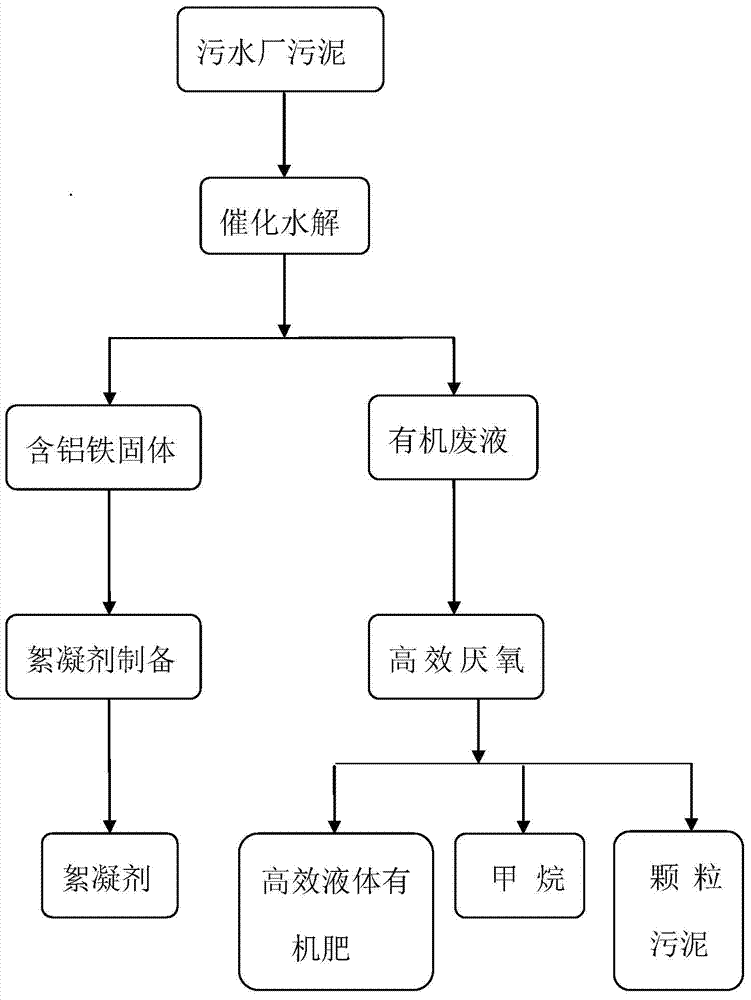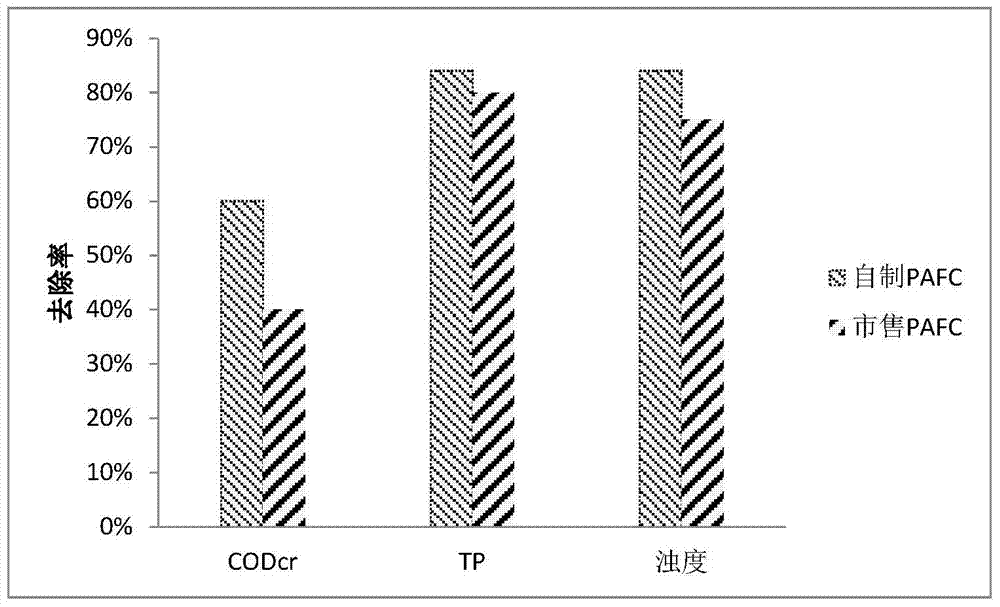Resourceful treatment method of sludge from sewage plant
A treatment method and technology of a sewage plant, applied in the direction of sludge treatment, water/sludge/sewage treatment, chemical instruments and methods, etc., can solve problems such as insufficient security, groundwater pollution, environmental impact, etc., and achieve zero Emissions and cleaner production, less investment, and faster response
- Summary
- Abstract
- Description
- Claims
- Application Information
AI Technical Summary
Problems solved by technology
Method used
Image
Examples
Embodiment 1
[0025] First put the sludge with a water content of 97-99% from the sewage plant into the hydrolysis reactor, add the catalyst sodium hydroxide, the amount of the catalyst added is 10% of the weight of the sludge, and under the pressure of 0.2-0.5MPa, Heat to 130°C-150°C, carry out catalytic hydrolysis reaction for 2 hours, and the moisture content of the sludge after the reaction will drop to 30-40%. The organic matter and inorganic matter in the hydrolysis reactor are separated, the brown liquid is organic waste liquid, and the remaining solid is mainly inorganic matter containing aluminum and iron solids.
[0026] The aluminum-containing iron solid is further processed to prepare a flocculant;
[0027] The separated organic waste liquid produces granular sludge, methane and liquid organic fertilizer through efficient anaerobic technology;
[0028] The preparation of the above-mentioned flocculant: first dry the aluminum-containing iron solid at 105°C, grind it, pass throug...
Embodiment 2
[0034] The sewage was treated with the polyaluminum ferric chloride (PAFC) flocculant prepared in Example 1.
[0035]The effluent of the primary sedimentation tank of a sewage plant was used for coagulation experiments. The water quality of the effluent of the primary sedimentation tank of the sewage plant is as follows: COD is 220mg / L, TP is 2.8mg / L, and turbidity is 250NTU. Polyaluminum ferric chloride (PAFC) flocculant of the present invention is compared with commercially available PAFC, has confirmed the superiority of the coagulation effect of the present invention (as figure 2 ).
[0036] Coagulation experiments were carried out with different coagulants (the average water temperature was 20°C, and the pH of the water sample was about 7.2), the COD and turbidity of the treated water samples were measured respectively, and the treatment effect under the optimal dosage (60mg / L) was compared. .
[0037] The polyaluminum ferric chloride (PAFC) flocculant synthesized from...
PUM
 Login to View More
Login to View More Abstract
Description
Claims
Application Information
 Login to View More
Login to View More - R&D
- Intellectual Property
- Life Sciences
- Materials
- Tech Scout
- Unparalleled Data Quality
- Higher Quality Content
- 60% Fewer Hallucinations
Browse by: Latest US Patents, China's latest patents, Technical Efficacy Thesaurus, Application Domain, Technology Topic, Popular Technical Reports.
© 2025 PatSnap. All rights reserved.Legal|Privacy policy|Modern Slavery Act Transparency Statement|Sitemap|About US| Contact US: help@patsnap.com


